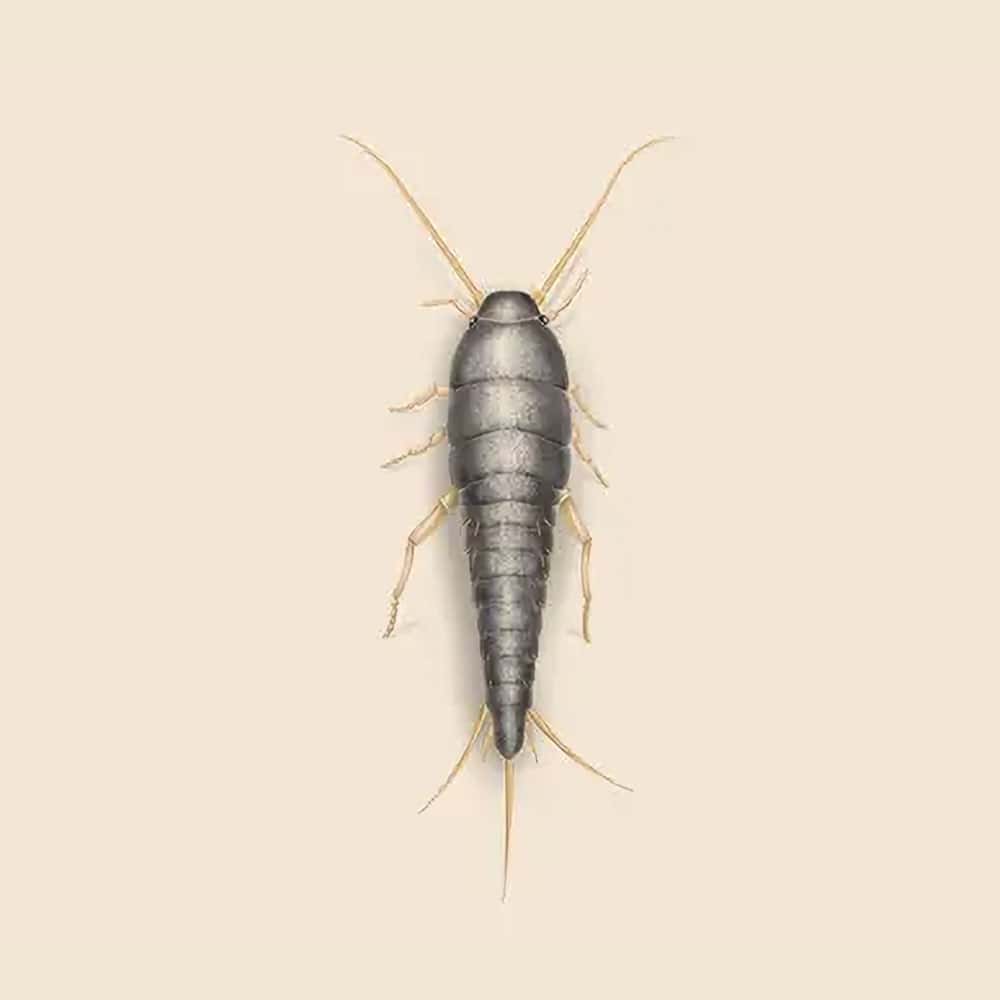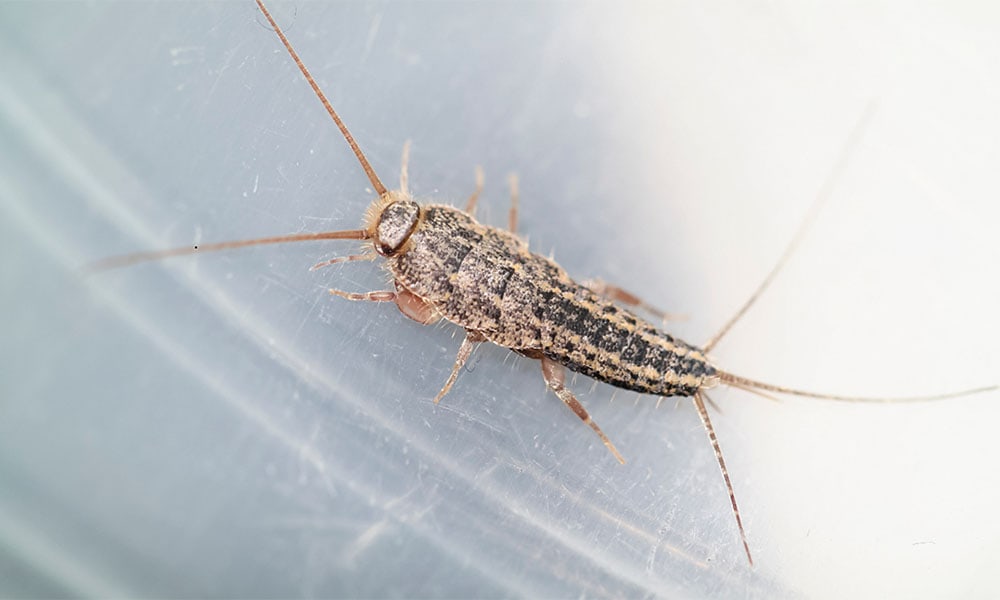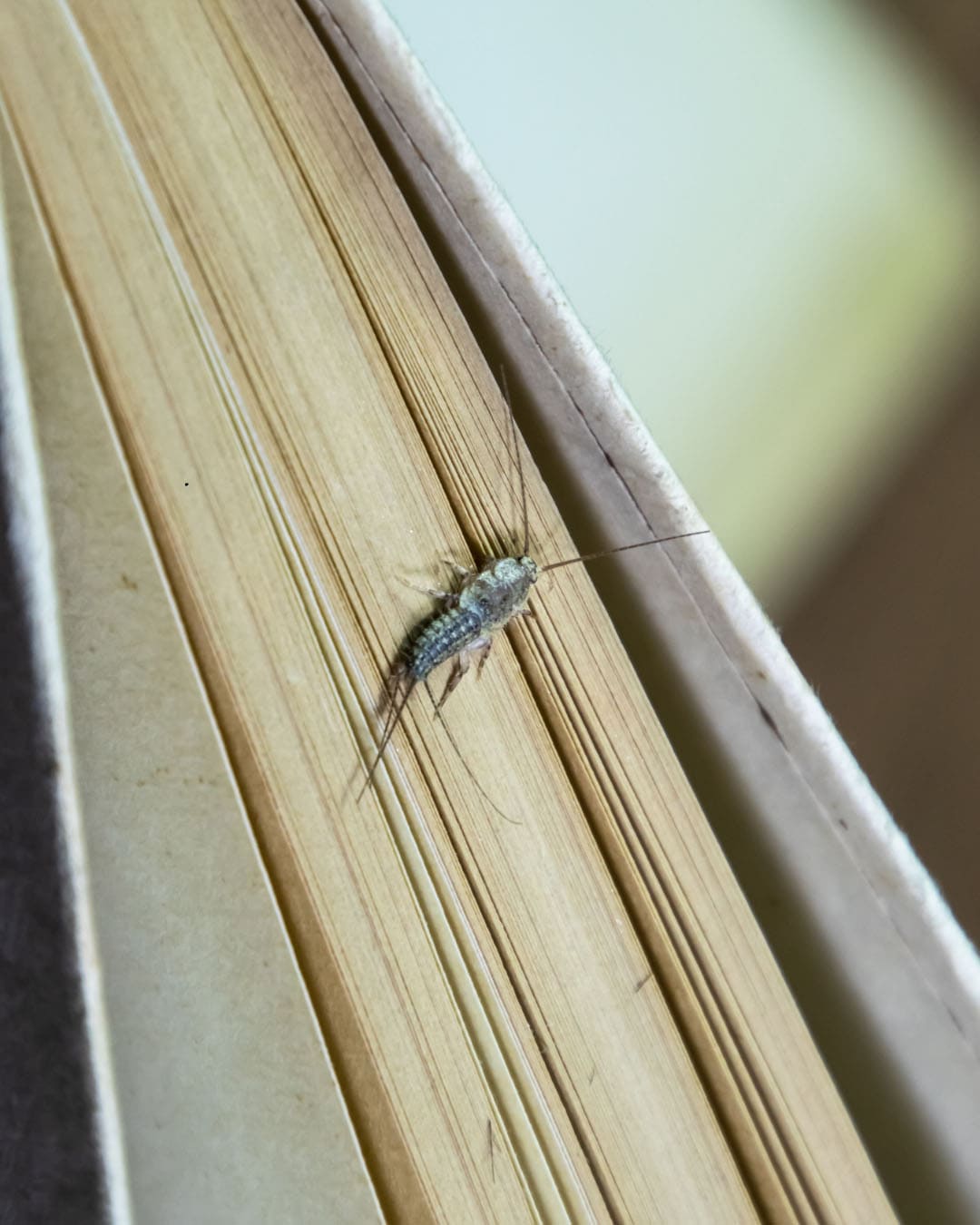Silverfish Facts & Information
Silverfish are small, wingless insects known for their silvery appearance and swift, wriggling movements. Though they are harmless to humans, their presence can be a nuisance, especially when they invade homes in search of food and moisture.

Lepisma saccharina
What You Need To Know About Silverfish
What do silverfish look like?
Silverfish are small, wingless insects that measure about 0.5 to 1 inch in length. They have a distinctive teardrop-shaped body covered in shiny, silvery-gray scales. Silverfish have long antennae and three bristle-like appendages protruding from the rear of their bodies, which give them a fish-like appearance, hence their name.
What do silverfish eat?
Silverfish are scavengers and feed on a variety of starchy materials. Their diet includes paper, glue, book bindings, wallpaper, and fabrics such as cotton and linen. They also consume grains, cereals, and dead insects. Silverfish are particularly attracted to materials that contain sugars and carbohydrates.
What sort of habitat do silverfish live in?
Silverfish thrive in dark, damp environments and are commonly found in basements, bathrooms, kitchens, and attics. They prefer areas with high humidity and will often hide in cracks, crevices, and behind baseboards. Silverfish are nocturnal, so they are rarely seen during the day and are most active at night when they come out to forage for food.
How do silverfish commonly behave?
Silverfish are fast-moving and secretive, which makes them difficult to spot. They are excellent climbers and can easily scale walls and other surfaces to reach food sources. Silverfish do not bite humans or pets, but their feeding habits can cause damage to books, clothing, wallpaper, and stored food. They reproduce slowly, but their persistence in hiding and feeding can lead to long-term infestations if not addressed.
Did you know this about silverfish?
Silverfish are ancient insects that have been around for over 400 million years, predating dinosaurs. They can survive without food for several months, making them resilient pests. Despite their longevity, silverfish have remained relatively unchanged in appearance since their early evolution. Interestingly, they have a long lifespan compared to other insects, living up to three years or more under favorable conditions.
Understanding Silverfish Infestations
Understanding silverfish infestations is essential for control. Silverfish are about 1/2 to 1 inch long, with a metallic sheen and a fish-like shape. They thrive in dark, damp areas, such as basements, bathrooms, and kitchens, where they feed on starchy materials like paper, glue, and textiles. While they don't transmit diseases, silverfish can cause damage to books, wallpaper, clothing, and other household items over time.

How Hearts Handles Silverfish Treatment
Hearts Pest Management employs an integrated pest management approach to handle Silverfish infestations.
Silverfish Inspection
Silverfish Treatment
Silverfish Prevention
Educational Resources

Think You Might Have a Silverfish Infestation?
At Hearts Pest Control, we understand the challenges associated with Silverfish infestations and are here to provide professional solutions tailored to your needs. Flourishing in warm and humid climates, they are prevalent in many regions, including San Diego County, Orange County, and Los Angeles County.